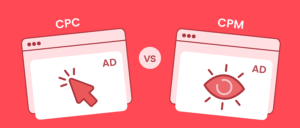What is CPC? A complete explanation with a calculation formula
What is CPC? A complete explanation with a calculation formula : In today’s marketing world, advertising methods are changing rapidly. If you are an advertising campaign ideator or looking to order a design, you must either adapt to modern marketing ideas or accept the loss. One of the common terms in web advertising is cost per click (CPC). In digital marketing, CPC means the cost you spend to receive each click on Google ads or other search engines.
In this article, we will learn how click-through advertising works, how its cost is calculated, and how to start a campaign that will yield the best results at the lowest cost.
In the following, we will examine these topics about CPC:
What is CPC or Cost Per Click?
The difference between CPC and PPC
How much does it cost per click?
How is the cost per click calculated?
How do we reduce the cost per click?
Why is CPC advertising essential?
What is CPC or Cost Per Click?
CPC or cost per click means an advertisement that a digital marketing expert runs so that after running the desired advertisement, you pay a fee for each click on it. Each click means attracting a potential customer and creating interaction with new users. Therefore, you must pay a fee each time you attract a user through that advertisement. The advertiser or the advertiser determines the maximum amount for each click. The amount reduced for each click is determined up to the maximum amount. This cost varies based on the quality score and the rank of other advertisers (Ad rank).
The most important alternative to cost per click is the cost per thousand views or CPM (Cost Per Mille) model. This model involves receiving a fee from the advertiser for every 1000 ad impressions or visits to the ad, regardless of whether the viewer clicks on the ad or not. The cost of CPM is much lower than that of CPC.
People who use cost-per-click advertising usually set a daily budget or the maximum amount that will be deducted from their daily budget per click. When an ad has received enough clicks to reach the total daily budget, the ad is automatically removed from display and displayed again the next day, and the cycle continues. For example, a website with a cost-per-click rate of $0.10 would pay an advertiser $100 for 1,000 clicks per day.
Difference between CPC and PPC
You may have heard of Pay-per-Click, or PPC for short. PPC and CPC describe the same thing: PPC is a system in which brands or companies pay the ad publisher a fee for each click on their ad. CPC is a metric used to measure the cost of each of these clicks.
Why is CPC advertising essential?
Advertising is one of the most important ways to invest. In addition to driving traffic to your website, CPC advertising brings several other benefits to your advertising campaigns, including:
Cost-effectiveness: Unlike the CPM model, where you pay for a visit, and there is no guarantee of customer acquisition, the CPC advertising model only pays for clicks that lead to your website and is assured of customer engagement.
Customization: By running campaigns based on trial and error in each campaign, you can make changes based on experience. Ultimately, by trial and error, you will achieve the best way to run the campaign with the least cost and loss.
Flexibility: Setting your cost-per-click ceiling helps you spend as much or as little as you want on the number of right clicks.
Measurable: With CPC advertising, you can measure the exact return on investment achieved through campaigns and track the customers you have attracted.
Being in the moment: When performing or ordering SEO on your site, you know from the beginning that you need to be patient for at least 3 months to see the effects of SEO on your site. With CPC advertising, you will see the impact of your campaign quickly.
Targeting: Running a CPC advertising campaign is the best opportunity to segment your target audience with essential criteria for your business. You can target a specific group of audiences by considering multiple criteria, such as gender, specific age group, political affiliations, and perhaps more detailed criteria.

How is the cost per click calculated?
The calculation of cost per click (CPC) varies across different advertising platforms, but Google Ads is the most essential and well-known CPC advertising platform. Below, we will discuss the factors that affect the cost calculation per click and introduce the final formula.
Your maximum bid per click
Quality Score
Competitive Rank of the Ad
Your maximum bid per click (Max CPC)
Google Ads uses a process to determine its rates that asks you to choose the maximum amount you will pay per click. Your cost varies and fluctuates up to the maximum price you set because the platform determines the cost per click based on the quality rating of the ad, location, user feedback, search topics, and relevant auctions. You can even have Google automate your prices by setting an advertising strategy to increase the number of clicks.
Quality Score
Google Ads assigns a specific score to your ad based on your CTR or click-through rate, the quality and relevance of your landing page content (Landing page experience), and the degree to which users’ searches are relevant to your ad text (Keyword Relevancy). You can increase your quality score with Google by reviewing and selecting the best keywords and considering an effective landing page for each.
Competitive Ad Rank
Ad rank is a measure that determines the quality and position of your ad compared to your competitors. This rank depends on factors such as your bid amount, the subject of people’s searches, and more.
To calculate your cost per click (CPC), divide your competitor’s Ad Rank by your Quality Score and multiply the resulting number by 0.01.
How do you reduce your CPC advertising costs?
Sometimes, pay-per-click advertising can be costly, even with a maximum cost-per-click (Max CPC) and daily budget limit. You need to have a plan to avoid wasting your advertising money and getting bad results. This means reviewing and creating a keyword strategy that will help you increase your Quality Score. A high Quality Score is a considerable measure of how your ads will compete with others.
Increase Quality Score
Your Quality Score is crucial to increasing clicks and reducing your costs. You can improve your Quality Score by adjusting the following settings:
Expected Click-Through Rate: You can edit your ad to make it more appealing to your target customers by highlighting features and benefits. Most importantly, ensure your ad details match the keywords you use.
Ad Relevance: Your ad should be relevant to your audience and search intent. Analyze the search results for different terms to understand what your audience is searching for for each term.
Landing Page Experience: The landing page is the page that the audience encounters after clicking on your ad. It should be relevant to your keywords and load fast enough on devices like mobile and desktop, so people who click don’t have to wait.
Keyword Research
Keywords and audience intent (user search intent) drive web searches. So, make sure your ads have the right keywords that will drive relevant people to your website.
Some techniques you can try include:
Targeting: You should target the right audience by matching keywords to what they are searching for.
Segmentation: You can divide your ads into groups with different keywords and match them with other keywords and search terms.
Grouping: Grouping involves creating more detailed groupings of your products and services. So, choose a group name for these detailed groupings. Use keywords that match searches in your CPC ads. For example, if you advertise headphones, you can categorize them into wired and wireless headphones and target your audience with similar keywords.

Finally
CPC, or cost-per-click, is a critical metric in digital advertising that measures the effectiveness of advertising campaigns. By understanding the concept of CPC and monitoring it closely, you can optimize your marketing campaign and drive traffic to your website while minimizing your advertising budget.
We look forward to your valuable feedback.